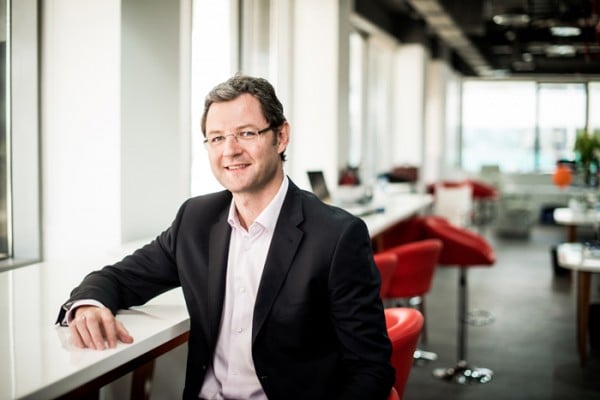With 320 million people to reach across 22 countries and eight timezones, how does a new pan-Arab channel survive in turbulent times? GM Carl von Doussa tells Eleanor Dickinson how
‘Cool, inspiring and youth-orientated’ are the words used to describe one of the latest pan-Arab offerings to hit the satellites recently. And indeed if Quest Arabiya is trying to hit the bright, young ‘Millennial’ market, it’s certainly pulling the right punches, from big Twitter-friendly PR stunts to crowdsourcing for new presenters via Facebook. All very ‘Made by Young Adults for Young Adults’ as British comedy The Young Ones amusingly parodied with the mock-up Nozin’ Around back in the 80s.
However, there will be no ‘nozin around’ for Quest in their mission to capture the region’s vast and varying audiences. Defining itself as the ‘first truly pan-Arab factual entertainment channel’, the Image Nation Abu Dhabi brainchild has already teamed up with Discovery Networks to screen its extensive back catalogue of extreme outdoor activities, nature and wildlife and people. On top on this, the channel is already in the process of creating and commissioning its own collection of content to showcase and nurture the region’s talent.
“It started from me having a conversation with the management and we started saying there is a real lack of native Arabic content both online and on television,” general manager Carl von Doussa explains. “How do we produce more of it and tell more stories across the region? Yes we can produce a whole lot of factual entertainment content, but you need a platform to engage with the audience and so a factual entertainment channel made more sense.”
“And as a result of Arab Spring, we have seen a real desire for people to express themselves across all platforms,” he continues. “Factual entertainment is a very good way of letting people express themselves in an apolitical fashion. We wanted to build a platform that would really let people celebrate culture and traditions and for the youth to celebrate themselves and their achievements. Very early on we realised this is not just about the United Arab Emirates, but about the whole region.”
Interesting how the words ‘Arab Spring’, an expression en masse of the region’s disillusionment with old dictatorial regimes, and ‘apolitical’ come together in the same sentence. Why in a time of so much political change, stagnation and frustration across the region is it necessary for a ‘young channel’ to stay on the sidelines? Are these waters just too murky to tread following the backlash against Al Jazeera during the Syrian uprising? No, according to von Doussa, it’s about “what the consumer wants.” He says: “At a time of unrest, news channels go through the roof anyway, why would we want to create another opportunity look at a whole heap of unfortunate, sad situations. And that’s not to say we want to positive-coat anything, but there are other things people and communities are doing with this unrest happening alongside us. We want to celebrate development and personal achievement and we can do that without the need for news. It’s not a concern of wanting to stay clear of it, but it’s not in our proposition.”
He adds: “It’s not a concern about being shut down, but about alienation and it inhibits free expression and we don’t need to go into it.”
Avoiding alienating anyone seems a reasonable answer especially given the channel’s sizeable task of penetrating 66 million households across 22 countries in the Middle East and North Africa. Factor in a four-hour time gap between the United Arab Emirates and Morocco, plus varying different Prime Time slots, then you’ve really set yourself up for some work. According to von Doussa that’s not something that paid-for TV channels – what he dubs a ‘failing business model’ – can achieve and in part prompted the decision to go free-to-air. While that will naturally make a channel vastly more accessible, especially given that only five per cent of MENA households even have paid-for TV according to von Doussa, can channels hope to make any money from advertising revenue alone? “The value of advertising here is significantly lower here than in other developed markets,” he admits. “There is a long way to go in terms of advertisers having their rates on par with terms of the market.
“There are only two free-to-air channels out there that make any money. There is not enough advertising money coming in to make a profit. These channels might make a wonderful programme, but they have to keep putting their hands in their pockets year in, year out. And we don’t expect to make a profit in the first five years, but in the second, why not?”
But given the rapid shift from tradition TV sets to smartphones in much of the region – the majority of Quest’s Saudi audience watches from a mobile – will there even be a need for TV channels in five years? “Back in 2001 when broadband came about, we all said newspapers are dead. That hasn’t happened. It’s shaken up the newspaper industry a bit, but people still want to read one. Television is one step further I think. In television, people still love the ability to talk about what’s programming, what’s topical and what’s going around,” concludes von Doussa. “Television is not going to go away in a hurry, but things are going to catch up a bit.”










